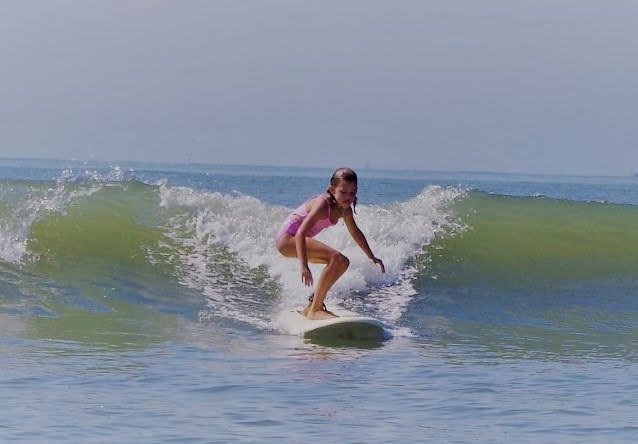Congaree National Park: Embracing Nature’s Raw Side—Mosquitoes, Snakes, and All
Congaree National Park offers a boldly natural experience—towering trees, rich wetlands, and the wildest kind of biodiversity. If you’re ready to respect nature’s raw edge, mosquitoes and all, this park rewards with an adventure unlike any other in the East.
Trail Tips
Pack Insect Repellent
Mosquitoes peak during summer months; liberal, frequent use of repellent is essential to keep bites manageable.
Expect Wet and Slippery Trails
Boardwalks and even trails can flood or get slick from humidity—wear sturdy waterproof footwear with grip.
Keep Kids Close, Watch for Wildlife
Supervision is critical to prevent encounters with snakes and alligators; wildlife sightings are common, not a threat if respected.
Go Early or Late in the Day
Avoid peak heat and insects by hitting trails at dawn or dusk when temperatures are cooler and wildlife is most active.
Congaree National Park: Embracing Nature’s Raw Side—Mosquitoes, Snakes, and All
Every year, as summer bears down on Congaree National Park in central South Carolina, a familiar chorus of grumbles and bad reviews starts floating in. Hot, buggy, and wild—yes. But "Worst National Park?" That deserves a closer look. Before your visit during our most intense season, let’s realign expectations and highlight what makes Congaree fiercely itself.
First off, we don’t spray chemicals or thin out our trees to create a sanitized experience. This is older, untamed forest, where trees push skyward with quiet determination—not giant like the West Coast’s redwoods, but giant enough to remind you this forest has seen centuries. Picture yourself among towering loblolly pines and massive bald cypresses draped in Spanish moss, a living cathedral of shade and mystery.
Yes, mosquitoes will test your patience, especially in July and August. Bug spray is your best friend. And while snakes, spiders, and the occasional alligator patrol the watery edges, they aren’t lurking to make your visit miserable—they’re part of the park’s intricate, vibrant ecosystem. Stay aware, supervise children closely, and keep a respectful distance from wildlife.
We won’t pretend this place is a postcard-perfect Instagram haven with sweeping mountain vistas or dramatic peaks. It’s flat, wet, and sometimes flooded, a swamp forest with a pulse of its own. Floodwaters push at boardwalks, and humidity clings to your skin—the park’s way of telling you this is raw nature, not tamed scenery.
This is for those who want adventure edged with reality. Walk the 2.4-mile Boardwalk Loop and find yourself surrounded by tall trees whose roots sink deep and wide, their canopy whispering ancient stories. Paddle the Congaree River during calmer times and feel the water dare you forward. Here, the environment calls the shots; your role is to respect and enjoy.
Congaree isn’t everyone’s cup of mosquito repellent, but if you crave a vividly real outdoor experience with giant trees, rich biodiversity, and a challenge to your expectations, it welcomes you. Just remember: nature here plays by its own rules—bring your boots, repel the bugs, watch your step, and you'll leave with stories that no cookie-cutter, sanitized park can offer.
So, to our honest critics and loyal fans alike—thanks for keeping us grounded. We may not win "Most Beautiful" awards or fit neatly into your perfect park snapshot, but we are proud to be wildly Congaree. Come prepared, come curious, and meet the swamp that’s unapologetically alive.
Recommended Gear
Bug Spray with DEET or Picaridin
Protects against heavy mosquito and insect activity during peak seasons.
summer specific
Waterproof Hiking Boots
Keeps feet dry and provides grip on wet or muddy boardwalks and trails.
spring|summer|fall specific
Hydration Pack or Water Bottle
Staying hydrated is crucial in the humid and hot environment—carry enough water for several hours.
all specific
Wide-Brim Hat and Light, Breathable Clothing
Helps manage heat and protect from sun exposure while allowing airflow.
summer specific
Frequently Asked Questions
Why is Congaree National Park considered "buggy"?
Congaree is a hardwood bottomland forest with swampy conditions that create ideal breeding grounds for mosquitoes and other insects, especially during summer months. The park’s policy against chemical spraying keeps the ecosystem balanced but increases biting insect presence.
Are there dangerous animals I should worry about in Congaree?
The park is home to snakes, spiders, and the occasional alligator. While these animals generally avoid humans, visitors must stay alert and keep children supervised to avoid accidental encounters.
How do floods affect accessibility in Congaree?
Flooding is seasonal and can temporarily close some boardwalks and trails. Checking current park conditions before visiting will help you plan your routes effectively.
What kind of trees will I see in Congaree?
Expect towering loblolly pines, baldcypress trees with their characteristic knees peeking from the water, sweetgums, oaks, and an impressive canopy that’s one of the tallest in the eastern US, though not as massive as West Coast giants.
Is the park suitable for family visits?
Yes, but families should keep close watch on children and educate them about wildlife safety—especially snakes—and prepare for bugs and heat.
Can I kayak or canoe in Congaree National Park?
Absolutely. Paddling the Congaree River during calmer water periods is popular, providing a unique view of the forest and wildlife. Rentals and guides are available nearby.
Nearby Experts
Local Insights
Hidden Gems
- "King Snake Boardwalk overlook, a quiet spot for birding away from main trails"
- "Weston Lake loop offers a less trafficked pathway with chances to see river otters"
Wildlife
- "Barred owls call through the night"
- "Eastern copperhead snakes sunning on logs"
- "American alligators lurking at pond edges"
History
"This forest endured logging threats in the 1950s but was saved by dedicated conservationists, preserving one of the largest intact old-growth bottomland hardwood forests in the U.S."


